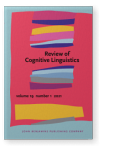Vol. 19:1 (2021) ► pp.111–141
Language and cultural cognition
The case of grammatical gender in Arabic and personified gender in cartoons
In this paper, we analyze a large-scale corpus of Arab cartoons to measure the correspondence between grammatical gender in Arabic and personified gender in images. The results show that the effect is very strong for males (a near-perfect relationship between the two, grammatical and visual depiction), but the reverse is the case for females (the grammatical description is almost the opposite in perceived meaning of the graphical depiction). It can be a substantive cartoon effect. That is, there is more ambiguity in images depicting females due to some implicit cultural effect (i.e., males/gendered maleness dominates even in the text in ‘male-centric’ cultures). We look at the implications of this androcentric behavior for understanding the complex set of relationships linking language, thought, and culture. Such research will aid both gender studies and cognition scholarship based on multimodal stimuli.
Article outline
- 1.Introduction
- 2.From personification to allegory in political cartooning
- 3.Grammatical gender in Arabic
- 3.1Is Arabic androcentric?
- 4.Corpus and methodology
- 5.Results
- 6.Discussion and concluding remarks
- Acknowledgements
- Author contribution
- Notes
-
References
